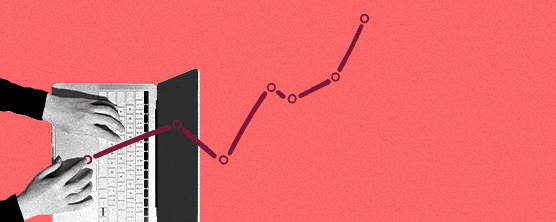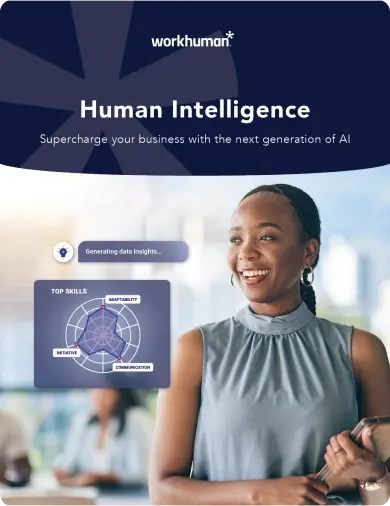
How Company Culture Influences AI
The integration of AI is not just a technical upgrade. It requires a shift in organizational mindset.

How Company Culture Influences AI
The integration of AI is not just a technical upgrade. It requires a shift in organizational mindset.

6 Tips to Increase Employee Engagement in Times of Change
Learn how you can engage your workforce by investing in the right AI, fostering physical and psychological safety, and creating a human-first culture in your organization.

Rewards and Recognition (R&R) Solutions PEAK Matrix® Assessment 2025
Workhuman has been named a Leader and Star Provider in Everest Group's Rewards and Recognition (R&R) Solutions PEAK Matrix® Assessment 2025.

Recognition & Productivity: The Impact on the Bottom Line
In a recent study, Gallup and Workhuman® outline the measurable impact employee recognition can have on both workplace culture and business. Learn how engage and inspire employees, build connection and rapport across teams, drive productivity and adaptability, and ultimately fuel business performance.

Upgrading the Employee Experience in Tech Companies
With Workhuman as your trusted recognition partner, develop and retain your tech workforce in an era of dynamic innovation.

Lifting the Employee and Patient Experience in Healthcare
With Workhuman as your trusted recognition partner, you can alleviate burnout and retain your healthcare employees. Here’s how.

How to Use AI in Employee Engagement to Transform the Workplace Experience
Discover how using AI in employee engagement can boost productivity and transform your workforce. Learn practical strategies to foster a more engaged workforce.

2025 Workplace Trends
What will forward-thinking HR leaders focus on in the new year? Discover the trends we’re expecting to dominate 2025.

Human Intelligence: Supercharge Your Business with the Next Generation of AI EMEA
How can you lean into emerging technologies like AI to upskill your workforce, building a connected, engaged, and resilient workforce? Introducing Human Intelligence from Workhuman.

Choosing Workhuman As Your Trusted Partner
The Workhuman platform unites people and culture, drives business outcomes, and fuels ROI – and as your trusted recognition partner, we’ll do the same for you.

3 Creative Ways to Build Culture and Engagement
Read on to discover the three actions you can take today to prioritize people and increase engagement.

Human Intelligence: Supercharge Your Business with the Next Generation of AI
How can you lean into emerging technologies like AI to upskill your workforce, building a connected, engaged, and resilient workforce? Introducing Human Intelligence from Workhuman.